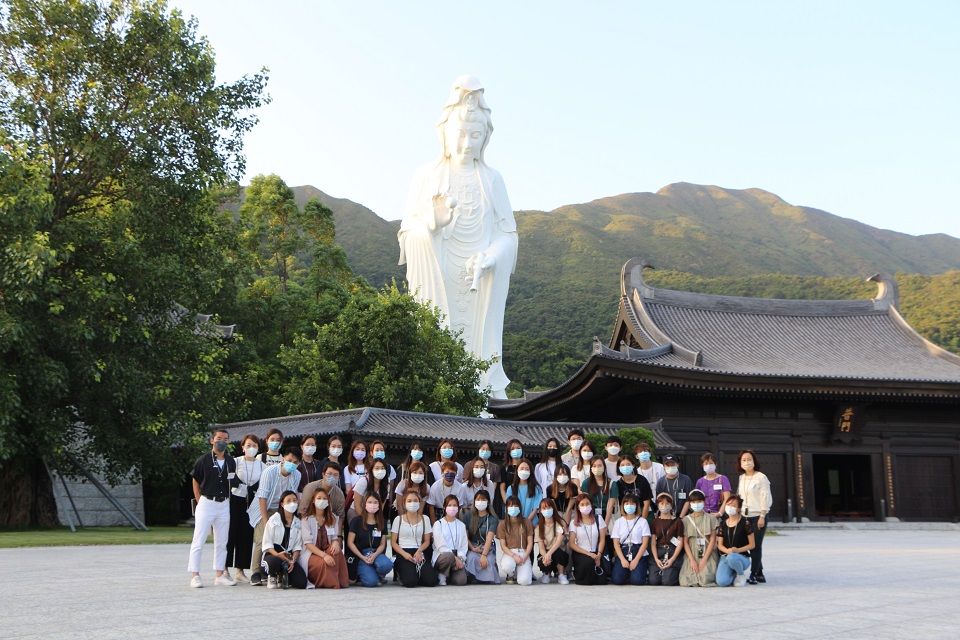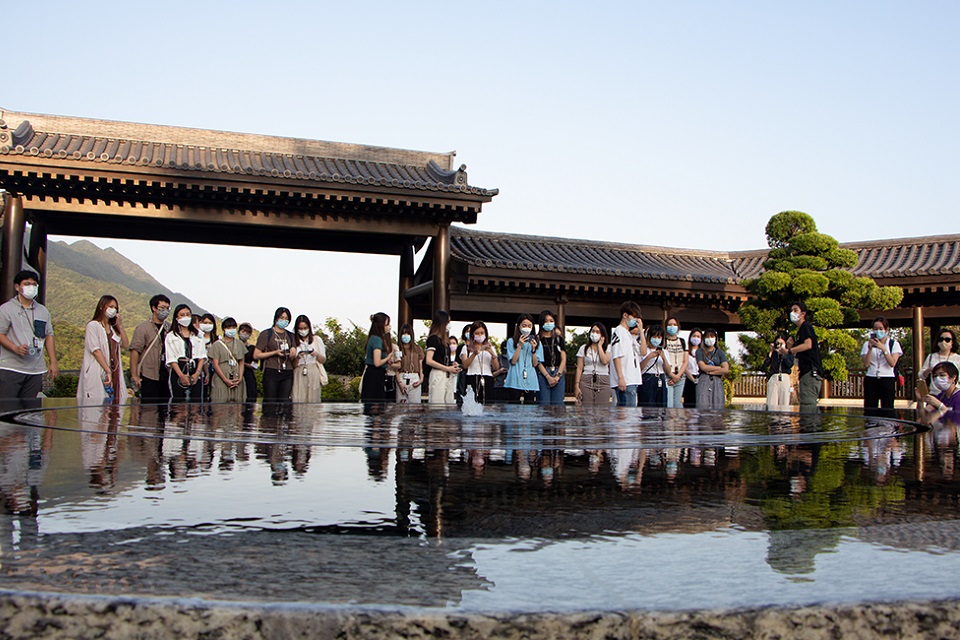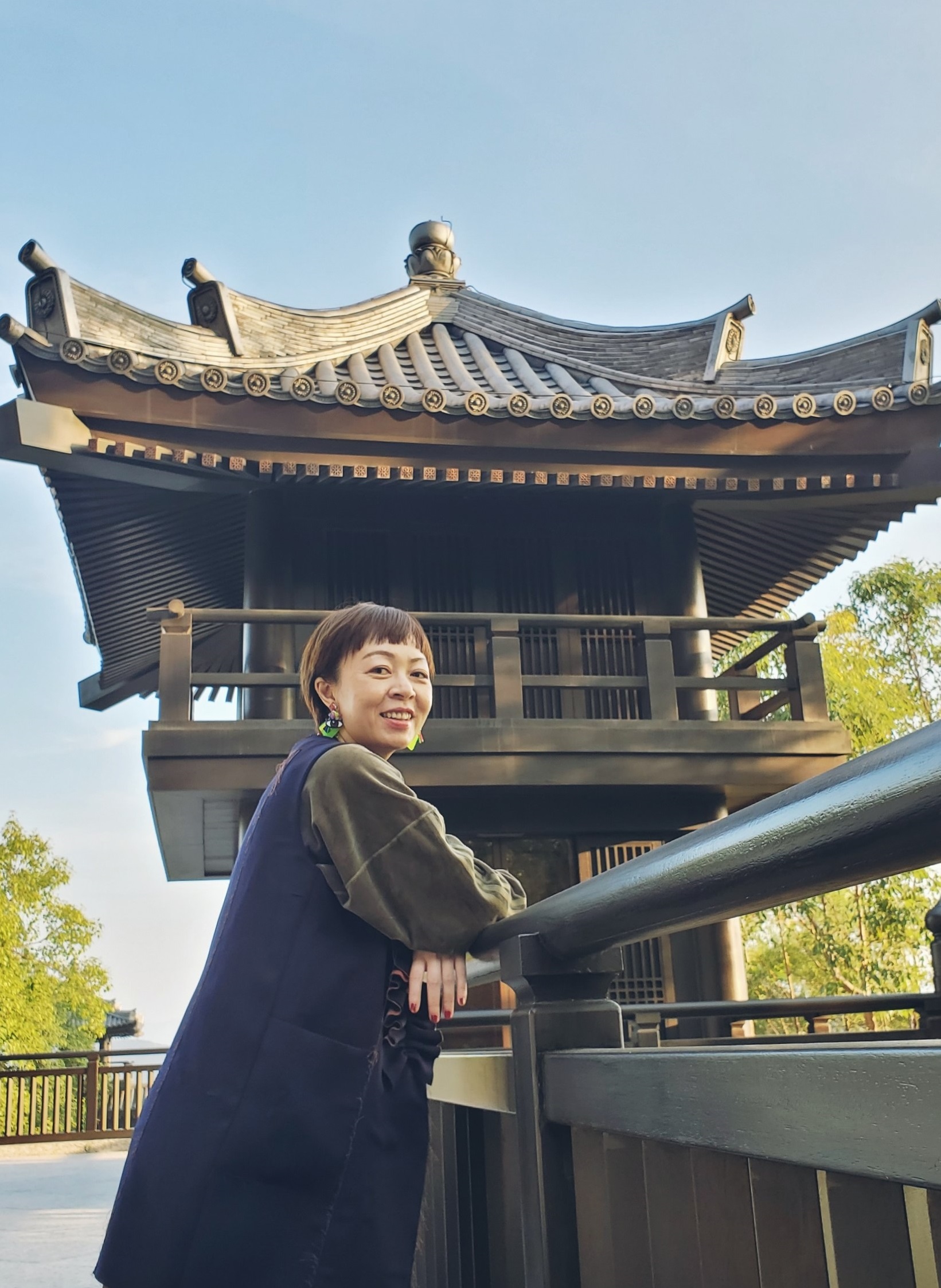Discover HKBU
Communication students’ book project tells the stories of a modern-day monastery
26 Jan 2023
Located amidst the lush landscape of Tai Po, the Tsz Shan Monastery (TSM) is a modern-day Chinese Buddhist monastery dedicated to promoting Buddhist teachings in Hong Kong. The tranquil setting, in striking contrast to the usual hustle and bustle of the city, offers a place for its visitors to quietly reflect and contemplate. Recently, the monastery also served as a teaching and learning space where a group of HKBU students applied their professional writing skills to create a meaningful book project.
Empowering students beyond the classroom
40 students who took the course “Public Relations Writing” conducted interviews with the masters, students, volunteers as well as staff at TSM, and they compiled a collection of creative work which details the mission and core services of the monastery. Written in a lively style, the book also calls upon readers to practise mindfulness, compassion and self-awareness.
“The book project provided an opportunity for students to write from their own perspectives and use storytelling techniques, inviting the readers to experience every corner of Tsz Shan,” says Dr Angela Mak, Associate Professor of the Department of Communication Studies, who led the course and coordinated this project in collaboration with TSM.
While the goal of the project was to provide communication students with the opportunity to apply public relations writing skills to real-life scenarios, for Dr Mak, the impetus also came from her desire to help young people build resilience during the trying times of the pandemic era. She came to know about the services of TSM through her participation in the programme “The Science and Art of Happiness” jointly offered by the monastery and the Greater Good Science Center at the University of California, Berkeley.
She says: “That course has enabled me to apply positive psychology in my teaching so that I can help my students develop resilience in the face of adversity, become more aware of their feelings and improve their connections with others.” She hopes that by working on this book project, the students can develop strengths and attributes beyond the classroom.
Transferring knowledge into fruitful results
To prepare for the project, the students were given a guided tour at the monastery, where they learnt about the complex’s architectural features as well as its collection of Buddhist statues. They were also introduced to the programmes offered by TSM and got a chance to practise meditation. Dr Mak says, “The visit was an enriching experience for our students, as it helped them gather information, prepare for the interviews and develop profile feature stories with a clear mind, so that they could include more vivid details in their writing of the book.”
For many students, the tour was their first time visiting the monastery. Melody Kung, a fourth-year student who participated in the project, says, “With great patience, the guide and the master of our tour took us to see the different places in the complex and answered our questions thoroughly. After this remarkable touring experience, I very much look forward to working on the project.”
From writing and editing to design and photography, the students worked in teams as they started this creative journey of building a book. Covering the four major service areas of TSM, namely “Care”, “Institute”, “Art” and “Youth”, the book features a series of articles about the people who are inspired or influenced by Buddhist teachings. To keep the readers engaged while encouraging them to be reflective, the students presented the concepts of mindfulness and self-awareness in a variety of creative ways, such as interactive games, knowledge sharing and fun quizzes.
Above all, the students were very grateful for the opportunity to apply their knowledge into practice. Melody says, “This project taught me how to produce a book from scratch. From conducting research and field study to reviewing the content and proofreading the copy, I was able to apply my public writing skills every step along the way.” She feels proud to see the project published and the knowledge she has learnt come into fruition.
An enlightening experience
For other students, the book project enabled them to see Buddhism in a different light. Gigi Yeung, also a fourth-year student, says that she knew very little about the history of Buddhism and Buddhist art before working on the book. “Through this project, I had the chance to talk to the staff at the monastery and get to know their perspectives and personal journeys. This made me understand that every person, every project and even every Buddhist artefact at the monastery has its own unique value,” she says. “I am very happy to be able to share their stories, in which the readers will no doubt find comfort.”
Dr Mak is delighted to see the students’ positive reactions to this learning experience. She would like to thank Mr Walter Ngai, Secretary General of Tsz Shan Monastery, for providing students with this valuable opportunity. “The book project not only helps the readers understand the importance of Tsz Shan Monastery’s services to the public, but it also provides meaningful interactions between my students and the people at the monastery. After spending time with these serene souls in such a lush environment, my students learned to develop better awareness of their thoughts and bodies, practise mindfulness and connect to those around them positively.”
To learn more about the book project, please visit the project website.


